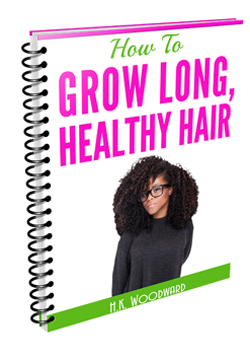|
Having used the products for a few weeks now, these are my ratings:
Detangler: 5/5 - it's awesome, I doubt there is a better product for detangling out there right now but I will try a few more. Wash Me Gently Shampoo: 2/5 - I don't like the way it makes my hair feel so I wouldn't buy this again. Conditioner: 5/5 - I will write an update when I find a conditioner better than this but for now, this is the best that I have found. Leave-in conditioner: 4/5 - personally, I think the smell is too strong but it is a good leave-in conditioner in terms of functionality.  Thymus Vulgaris Thymus Vulgaris
Thyme essential oil (Thymus vulgaris) also known as Common Thyme has numerous documented antiseptic and healing properties.
Thyme stimulates blood circulation. Therefore rubbing an oil that contains thyme onto your scalp promotes the delivery of nutrients to the scalp and encourages hair growth.[i] Thyme is known to help with dandruff problems and to clear dirt from the scalp.[ii] Thyme has also been used to treat thinning hair and hair loss problems. However, note that not there are many different types of thyme. Thymus Vulgaris itself comes in two commercial varieties: red thyme and white thyme. White thyme is derived by re-distilling red thyme. Red thyme has more phenols and is, as a result, more expensive. Overuse of red thyme can easily lead to skin irritation. For this reason, we prefer to use white thyme in the production of Neno Natural’s Hair Growth Stimulator. If you’re wondering what phenols are, they’re a group of chemical compounds found in plants. Whilst some phenols are toxic and corrosive, others are believed to be involved in cancer prevention, to have antioxidant properties and to slow down the aging process.[iii] What is thyme when it’s at home? Thyme is an evergreen shrub that grows to a maximum height of 15 to 20 cm. It is native to Southern Europe. [i] What Essentials Oils Are Good for Hair Growth (Livestrong) [ii] Natural Hair Care (surviving-hairloss.com) [iii] What are the Benefits of Phenols (Livestrong)  Structure of a paraben Structure of a paraben
Parabens are preservatives. They prevent bacteria, fungi and other microbes from growing in cosmetics and as such help them to last longer.
Examples of parabens include butylparaben, ethylparaben, isobutylparaben, methylparaben and propylparaben. Typically a product will contain more than one paraben plus they are normally used in combination with other preservatives to target different types of microorganisms. Parabens can be found in 90% of cosmetics: lotions, mascaras, foundations, lipsticks, deodorants, shaving gels, shampoos, conditioners and other day to day products. Parabens are not bad for your hair as such but they are thought to be bad for the body; they have been connected to breast cancer and although studies haven’t conclusively said that parabens cause cancer, cancerous cells were found to contain parabens in a higher-than-normal density. It is thought that parabens disrupt the function of hormones by mimicking oestrogen. Increased exposure to oestrogen is associated with a greater risk of breast cancer. In a 2002 study parabens were found to reduce the sperm count of mice. However, the concentration of parabens was 100 times higher than that found in the average cosmetic product. The parabens found in make-up and other cosmetics are synthetically produced but parabens do naturally occur in certain foods, e.g. blueberries Only a minute quantity of parabens enter the body through food. Having parabens in so many products means they enter the body through the bloodstream and we thus might be getting higher concentrations than is healthy. The current official US government guideline is that parabens are safe as used in cosmetics. Personally, given the current state of flux on whether or not parabens are harmful, I wouldn’t freak out if you find parabens in some of your products. That said, I would avoid them where possible to keep on the safe side. |
I now blog about wealth creation - so if you have any money questions meet me there, you can do all sorts of cool things like leave me a voicemail.
By Heather Katsonga-Woodward
I was a natural hair blogger and mixtress living between London & Chicago from 2012 to 2017. I always thought I was 4C but some say 4B; images below - you decide! Heather xx Categories
All
Archives
November 2016
|












